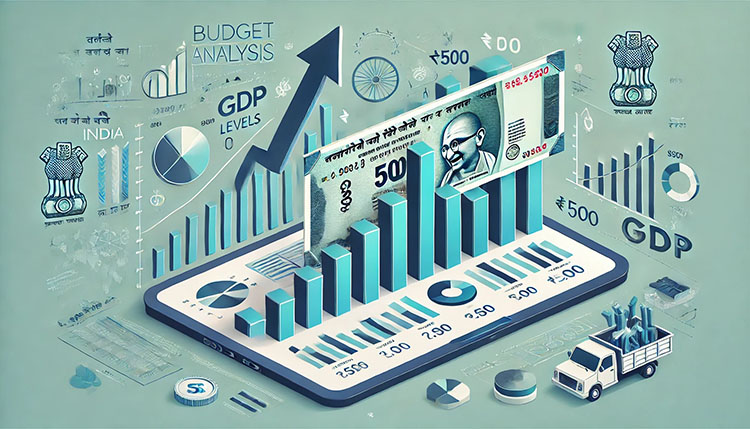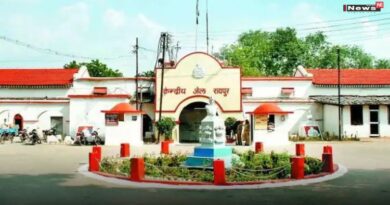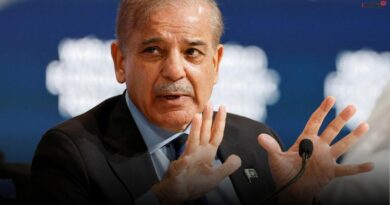Union Budget 2025-26 : Key Highlights and Implications
 The Union Budget 2025-26, presented by Finance Minister Nirmala Sitharaman, lays the foundation for an inclusive and self-reliant economy. The budget focuses on four key development engines—Agriculture, MSMEs, Investment, and Exports—to drive India’s economic growth under the theme of “Sabka Vikas.” Below are the major announcements across different sectors:
The Union Budget 2025-26, presented by Finance Minister Nirmala Sitharaman, lays the foundation for an inclusive and self-reliant economy. The budget focuses on four key development engines—Agriculture, MSMEs, Investment, and Exports—to drive India’s economic growth under the theme of “Sabka Vikas.” Below are the major announcements across different sectors:
- Taxation Reforms: Relief for Middle-Class Taxpayers
This year’s budget provides a significant relief for the middle class by raising tax exemption limits and simplifying compliance measures.
- No Income Tax for Monthly Income up to ₹1 Lakh
Previously, individuals earning over ₹7 lakh annually were subject to taxation. The new regime significantly raises this threshold, allowing individuals earning up to ₹12 lakh per annum (₹1 lakh per month) to pay zero tax. This move is expected to increase disposable income, encourage higher savings, and boost household consumption, thus driving demand across various sectors of the economy.
- Salaried Class to Benefit Under New Regime
Individuals earning up to ₹12.75 lakh per annum will not pay income tax under the new tax regime, making it more attractive compared to the old tax system. The government aims to transition more taxpayers to this simplified structure by reducing deductions and exemptions while lowering tax rates.
- New Income Tax Slab Rates for AY 2026-27
| Total Income (₹) | Rate of Tax |
| Up to ₹4,00,000 | Nil |
| From ₹4,00,001 to ₹8,00,000 | 5% |
| From ₹8,00,001 to ₹12,00,000 | 10% |
| From ₹12,00,001 to ₹16,00,000 | 15% |
| From ₹16,00,001 to ₹20,00,000 | 20% |
| Above ₹20,00,000 | 30% |
- Ease in Compliance and Taxpayer-Friendly Measures
- Updated income tax return filing period extended from two to four years, allowing taxpayers more flexibility in correcting past returns.
- TDS (Tax Deducted at Source) on rent increased from ₹2.4 lakh to ₹6 lakh per annum, reducing the tax burden on landlords and small rental businesses.
- Delay in TCS (Tax Collected at Source) payment decriminalized, offering relief to businesses dealing with tax deductions.
- To reduce compliance pressure on small taxpayers, the Bill includes adjustments to the thresholds for various TDS provisions, allowing more individuals and small businesses to be exempt.
These measures are designed to increase compliance, reduce litigation, and promote economic growth by boosting disposable income.
- Agriculture: Empowering Farmers and Rural India
Recognizing agriculture as a key driver of economic growth, the budget introduces various schemes aimed at increasing productivity, supporting farmers, and improving rural livelihoods.
- ‘Prime Minister Dhan-Dhaanya Krishi Yojana’ for 100 Low-Productivity Districts
- This scheme will help farmers improve crop productivity, adopt modern farming techniques, and increase income levels.
- It will focus on crop diversification, improved irrigation, and access to credit to enhance long-term agricultural sustainability.
- ‘Mission for Aatmanirbharta in Pulses’
- India continues to rely on imports for pulses like Tur, Urad, and Masoor. The government has launched a six-year mission to boost domestic production.
- Central agencies like NAFED and NCCF will procure as much produce as possible from farmers over the next four years to ensure price stability and self-sufficiency.
- Boosting Agricultural Credit and Investments
- The Kisan Credit Card (KCC) loan limit increased from ₹3 lakh to ₹5 lakh, offering easier access to affordable credit.
- Special emphasis on high-yielding seeds, fruit and vegetable production, and cotton productivity to ensure better farm output and increased farmer earnings.
These measures will empower small and marginal farmers, increase agricultural resilience, and make India self-reliant in key crops.
- MSMEs and Industry: Driving Economic Growth
Micro, Small, and Medium Enterprises (MSMEs) contribute over 30% of India’s GDP and 45% of exports. Recognizing their crucial role in economic development, the budget offers substantial support to boost capital access, technology adoption, and ease of doing business.
- Credit Guarantee Cover Enhanced from ₹5 Crore to ₹10 Crore
- More small businesses will now have access to higher credit facilities, allowing them to expand operations, invest in new technologies, and create more jobs.
- New Scheme for First-Time Entrepreneurs
- A dedicated scheme will provide ₹2 crore term loans for 5 lakh women, SC, and ST entrepreneurs over the next five years, promoting financial inclusion and entrepreneurship.
- ‘Make in India’ Initiative Strengthened
- A National Manufacturing Mission will be set up to support small, medium, and large industries.
- The government will also promote India as a global hub for toy manufacturing, reducing dependence on Chinese imports.
By improving credit access, encouraging entrepreneurship, and strengthening domestic industries, the government aims to enhance MSME competitiveness, generate employment, and boost exports.
- Investment and Infrastructure: Building a Stronger India
Investment is the third key pillar of India’s economic growth. This budget significantly increases public and private investment in urban development, infrastructure, and research & innovation.
- ₹1 Lakh Crore Urban Challenge Fund
- This fund will be used to develop ‘Cities as Growth Hubs’, ensuring planned urbanization.
- It will support projects related to water and sanitation, smart city infrastructure, and affordable housing.
- Private Sector Research & Development (R&D) Support
- ₹20,000 crore allocated to encourage private-sector-driven research, innovation, and technology development.
- The focus will be on emerging fields like AI, robotics, biotech, and space technology.
- Infrastructure Development for Sustainable Growth
- Jal Jeevan Mission extended till 2028, ensuring clean drinking water to every rural household.
- A National Geospatial Mission will be launched to develop geospatial data for better urban planning and disaster management.
These investments will create jobs, modernize infrastructure, and enhance India’s global competitiveness.
- Technology and Education: Future-Ready Workforce
- 50,000 Atal Tinkering Labs in government schools over the next five years.
- ₹500 crore Centre of Excellence in Artificial Intelligence for Education.
- Bharatiya Bhasha Pustak Scheme to digitize Indian language books for school and higher education.
- Banking and Financial Reforms
- FDI limit in insurance increased from 74% to 100% to attract foreign investments.
- Jan Vishwas Bill 2.0 to decriminalize over 100 provisions in various laws.
- UPI-linked credit cards with ₹30,000 limit under PM SVANIDHI scheme to support small businesses.
- Energy and Transportation: Strengthening Connectivity
- ₹20,000 crore allocation for Small Modular Nuclear Reactors (SMRs) for clean energy.
- Modified UDAN scheme to improve regional air connectivity to 120 new destinations.
- Healthcare and Welfare: Strengthening Social Security
- Gig workers to receive identity cards, e-Shram registration, and healthcare coverage under PM Jan Arogya Yojana.
- Custom duty exemptions on 36 lifesaving drugs for cancer, rare diseases, and chronic illnesses.
- Fiscal Management: Maintaining Stability
- Fiscal deficit projected at 4.8% of GDP for FY25, with a target to reduce to 4.4% in FY26.
Budget at a Glance (Key Figures)
| Sector | Key Announcement | Allocation/Funding |
| Taxation | No tax for income up to ₹1 lakh/month | – |
| Agriculture | Dhan-Dhaanya Krishi Yojana for 100 districts | ₹5,000 crore |
| MSMEs | Credit guarantee cover increased | ₹10 crore per unit |
| Education & AI | AI Centre of Excellence for Education | ₹500 crore |
| Urban Development | Cities as Growth Hubs | ₹1 lakh crore |
| Nuclear Energy | Small Modular Reactors for Clean Energy | ₹20,000 crore |
| FDI | Insurance limit raised to 100% | – |
This budget marks a significant shift toward fostering a self-reliant, investment-driven, and technologically advanced economy. With reforms in taxation, agriculture, MSMEs, infrastructure, and AI, India aims to strengthen its global economic position while ensuring inclusive growth for all.



